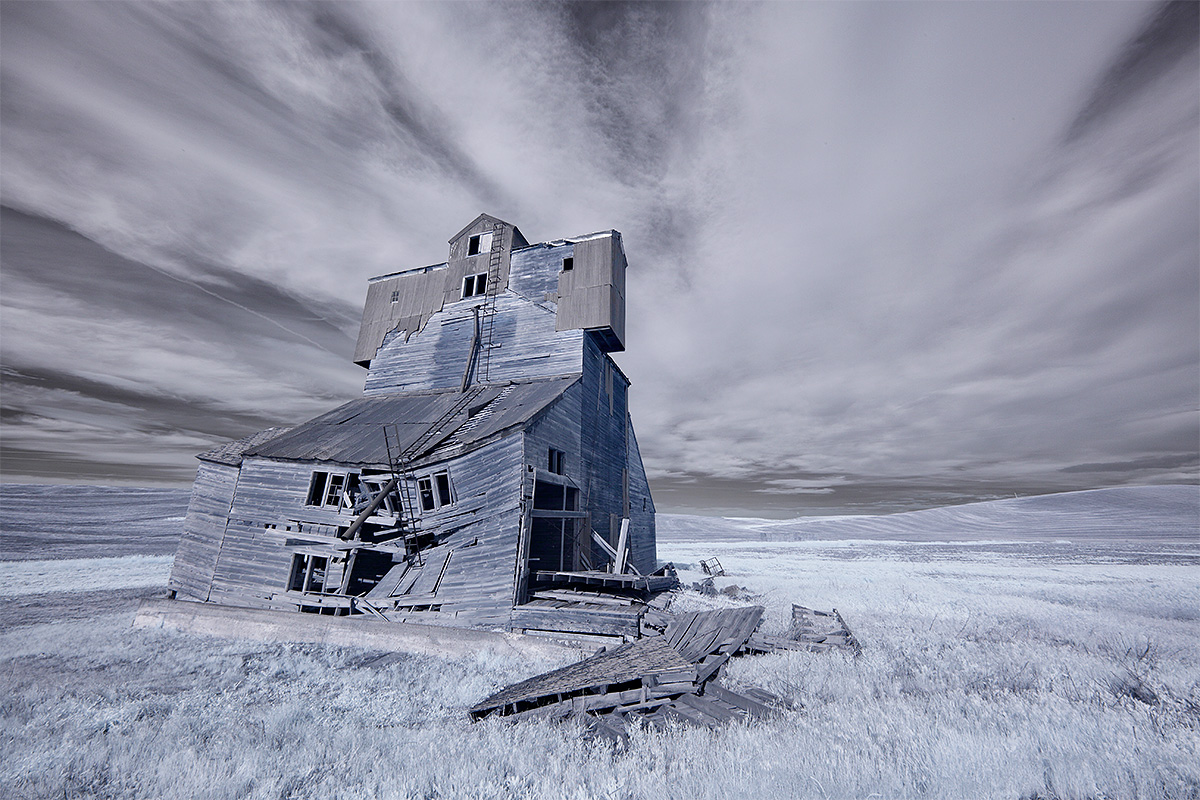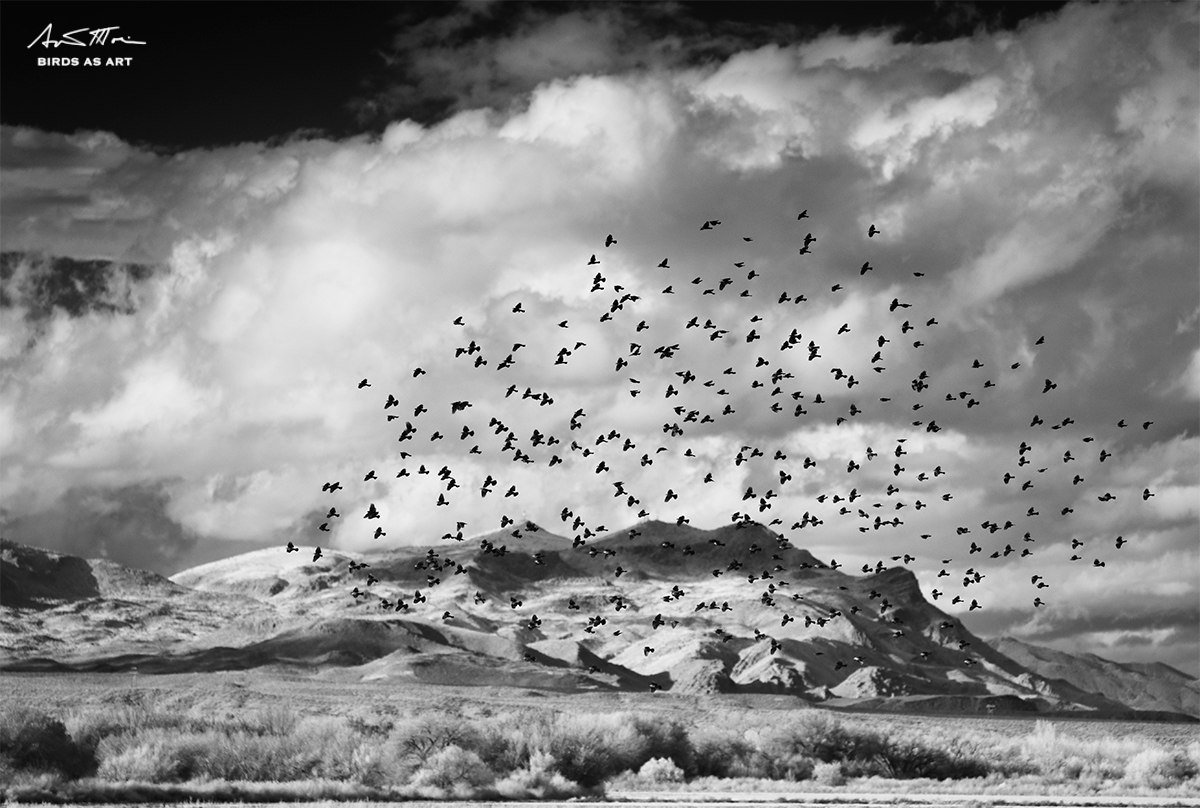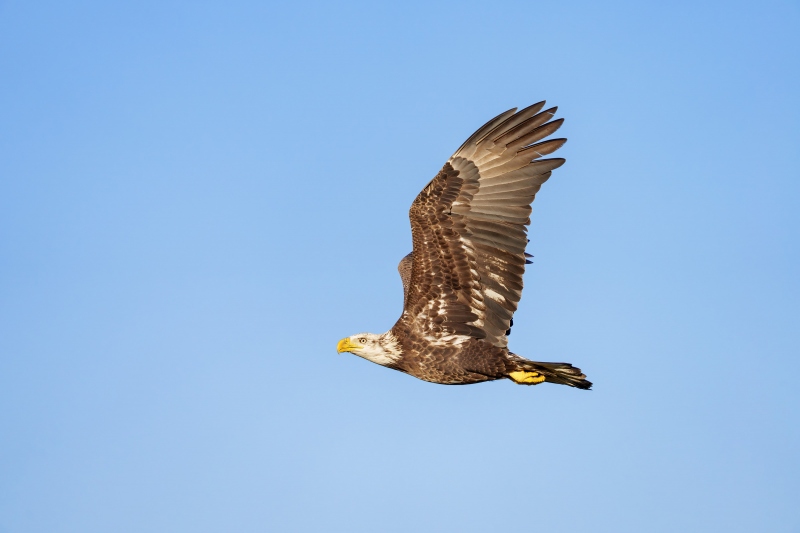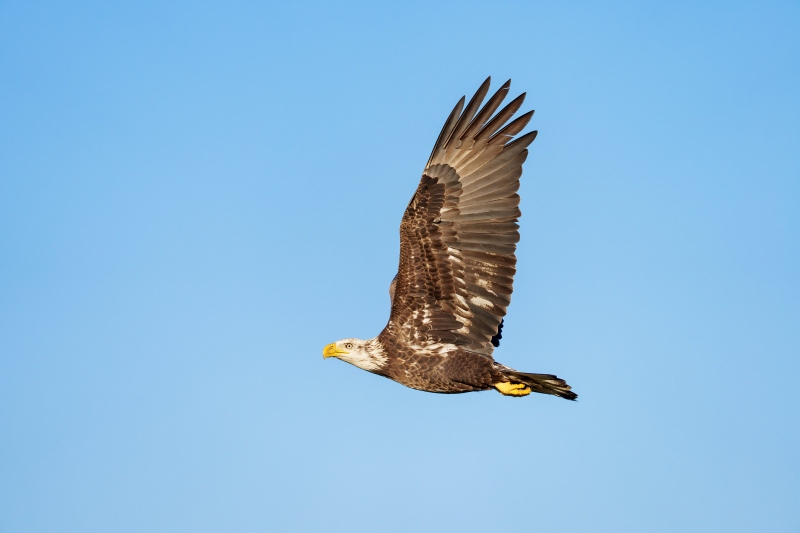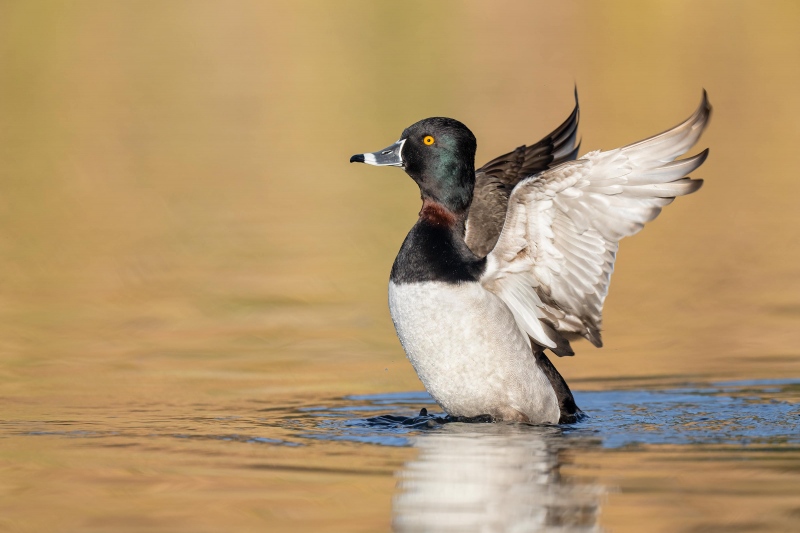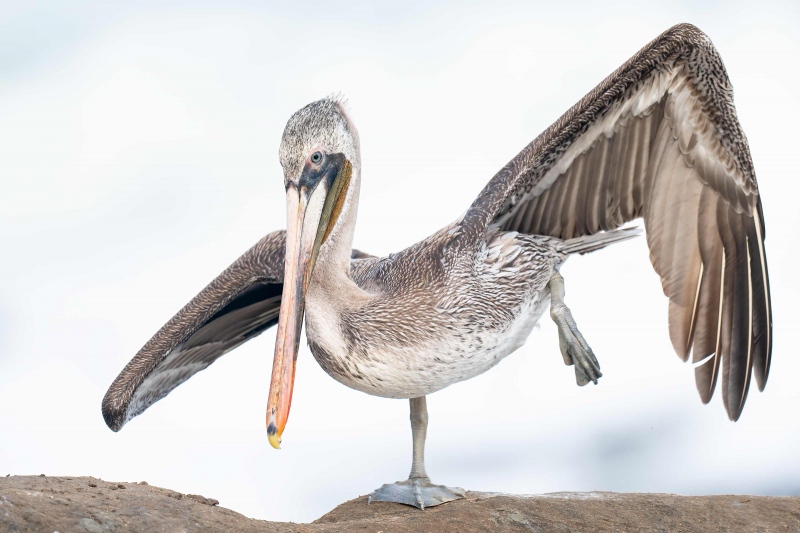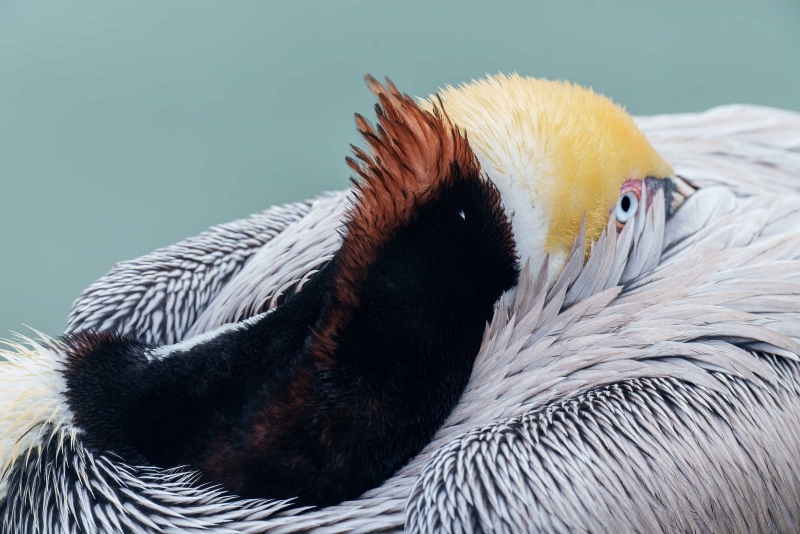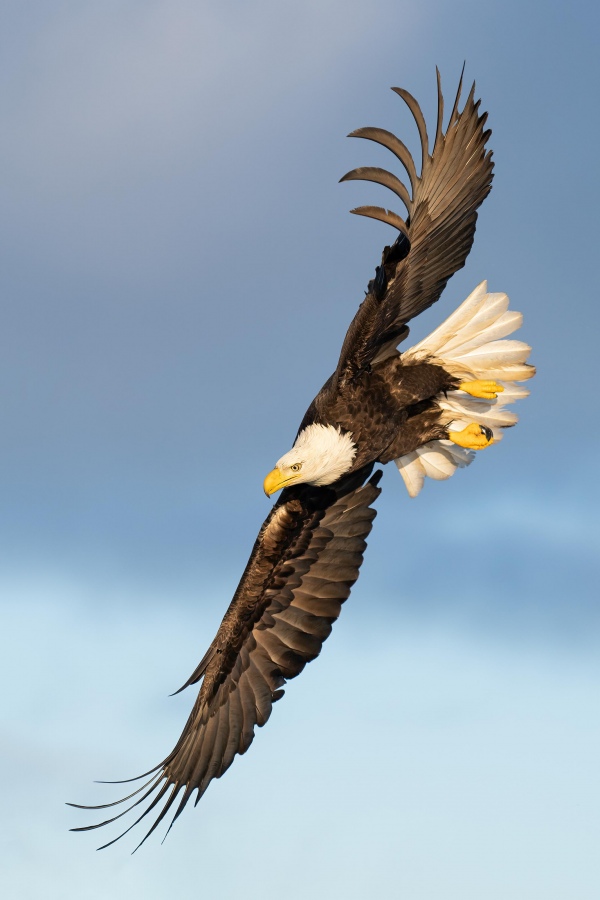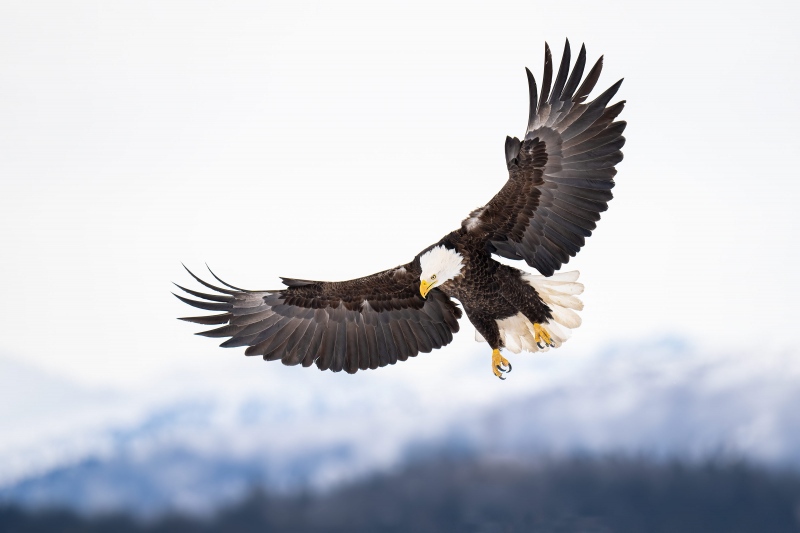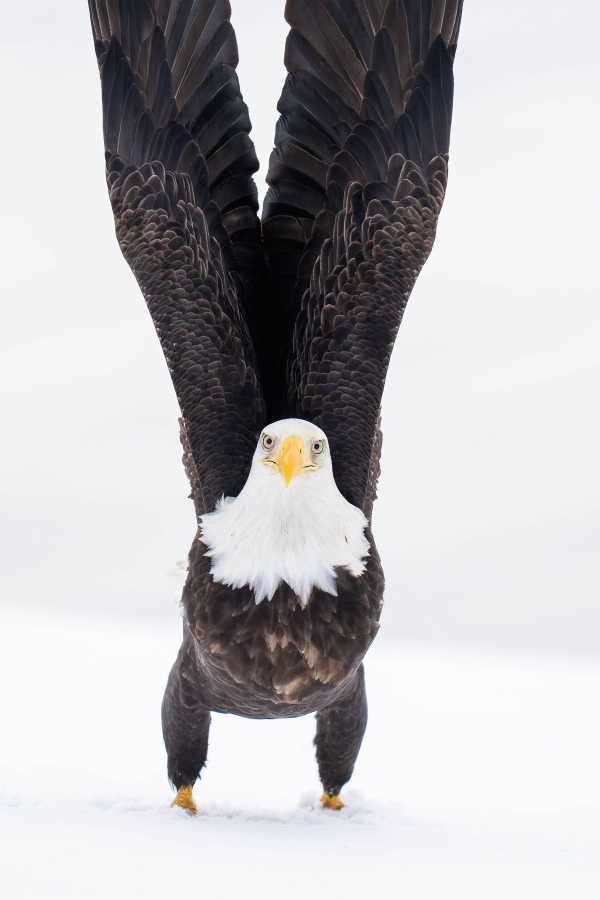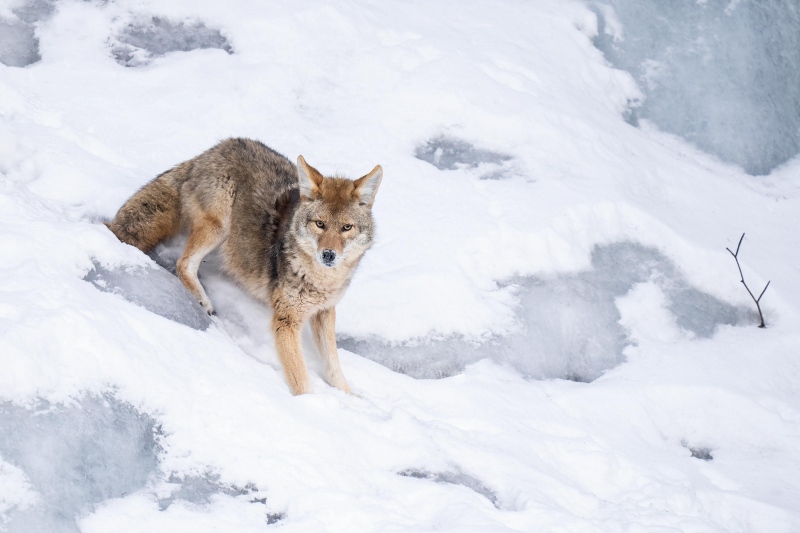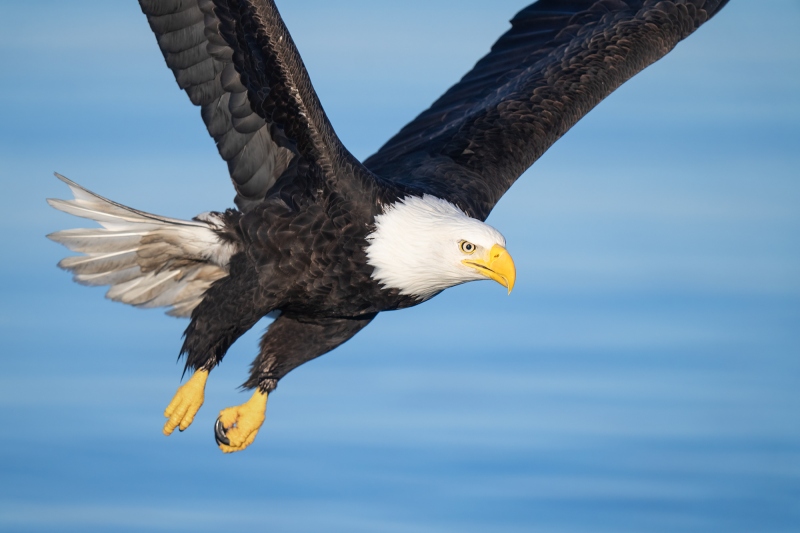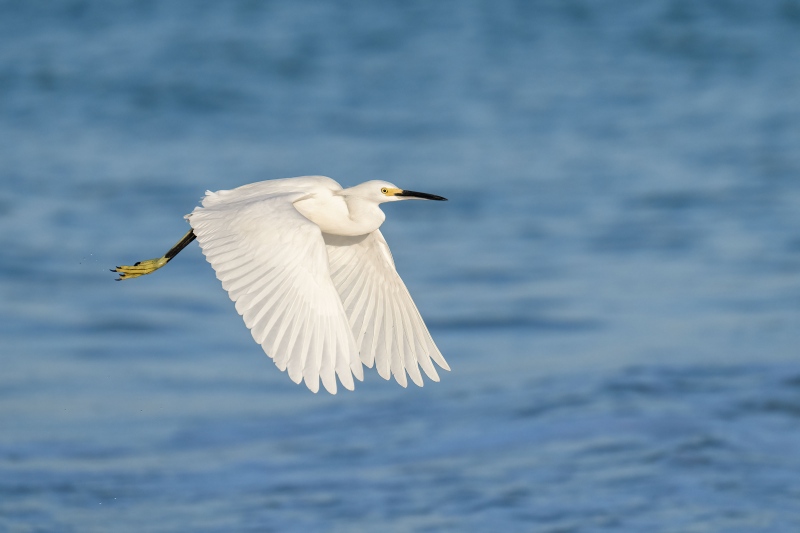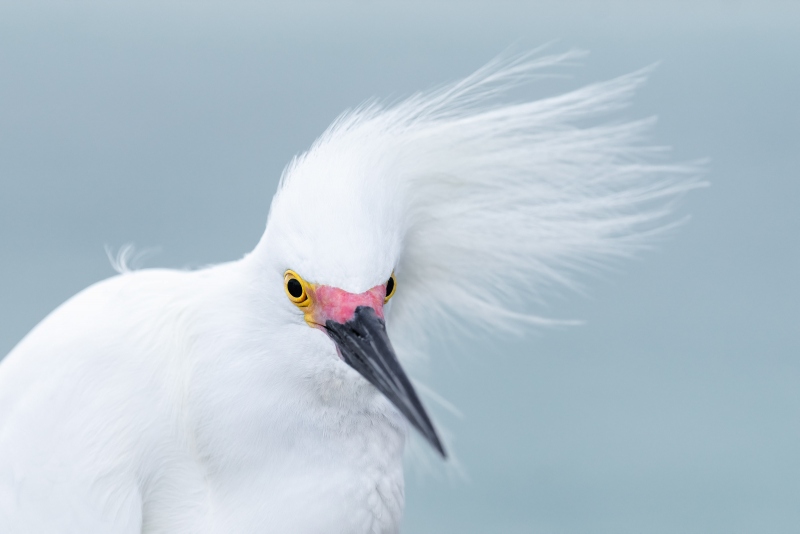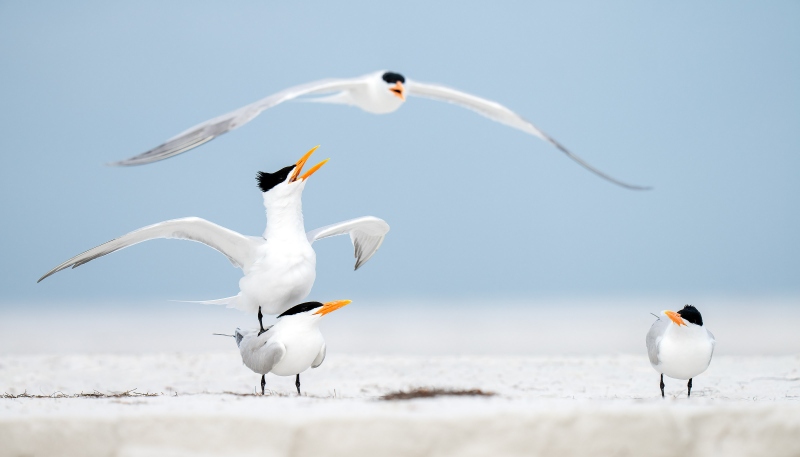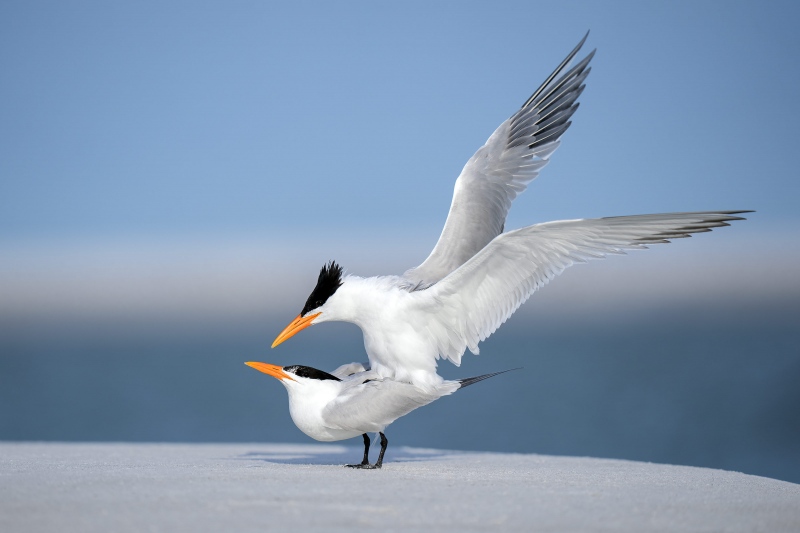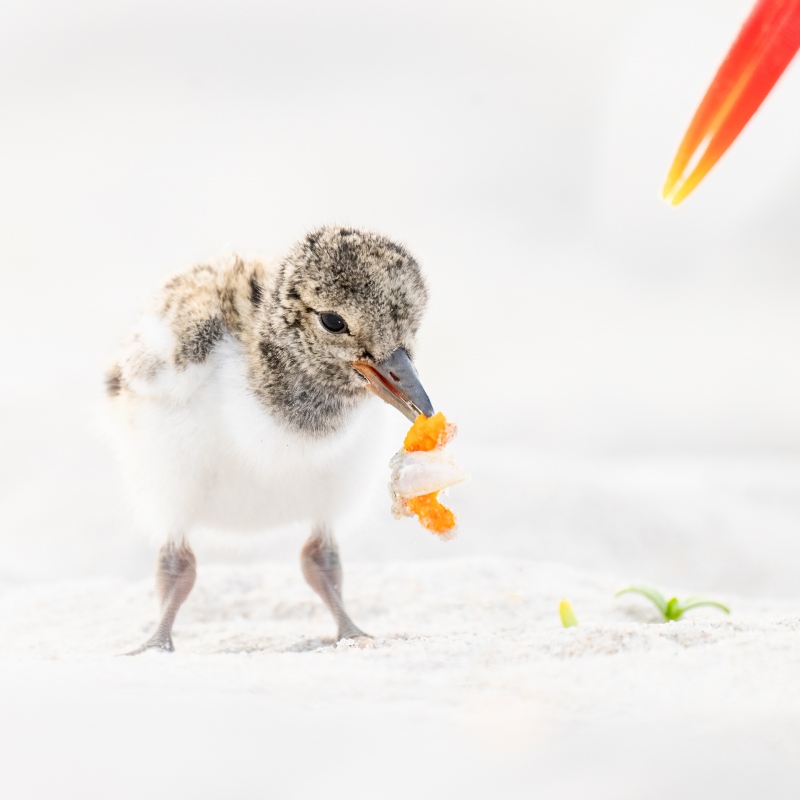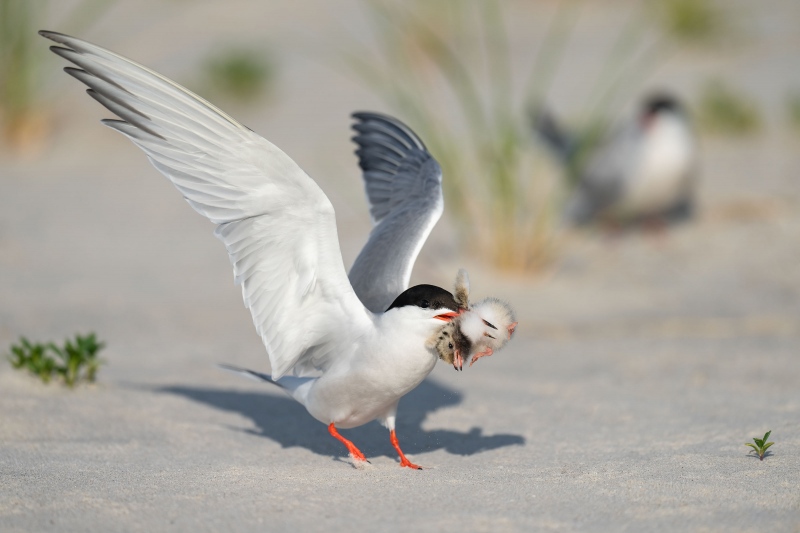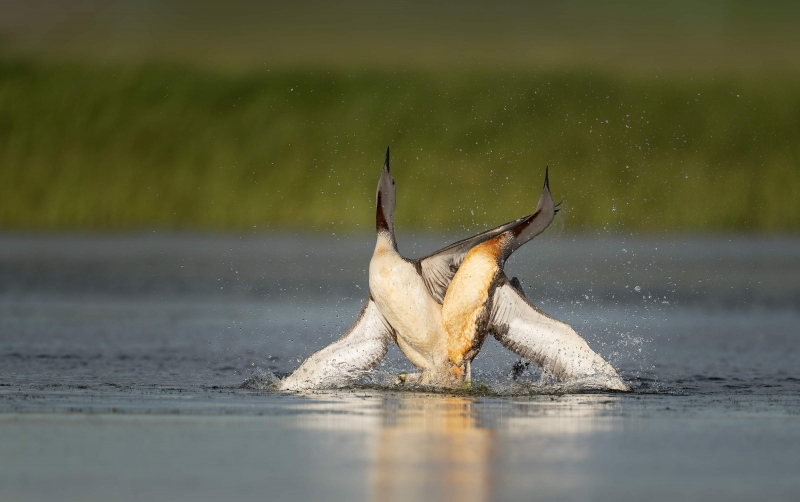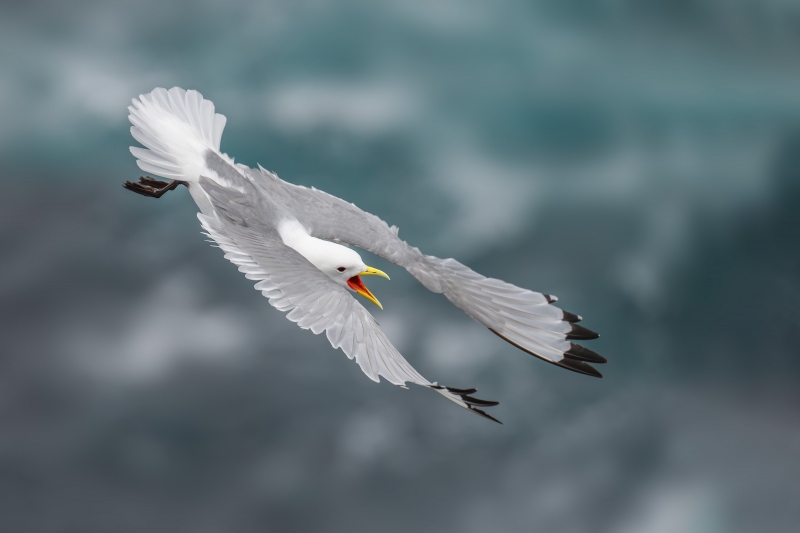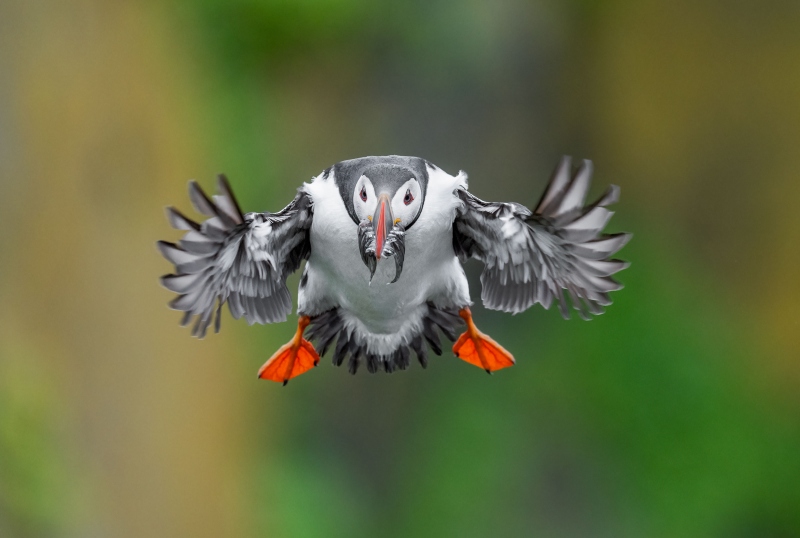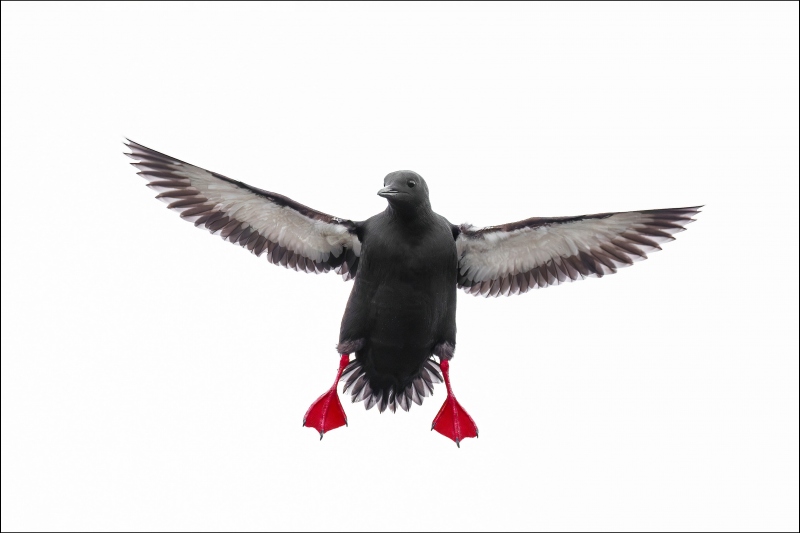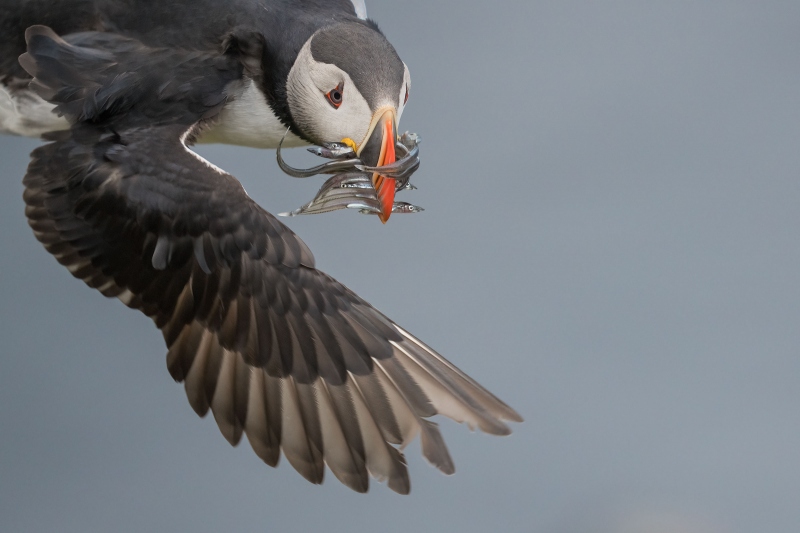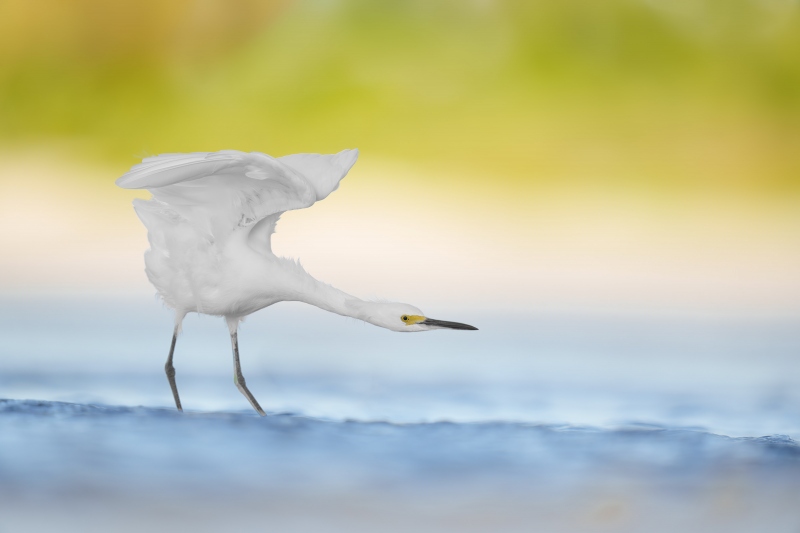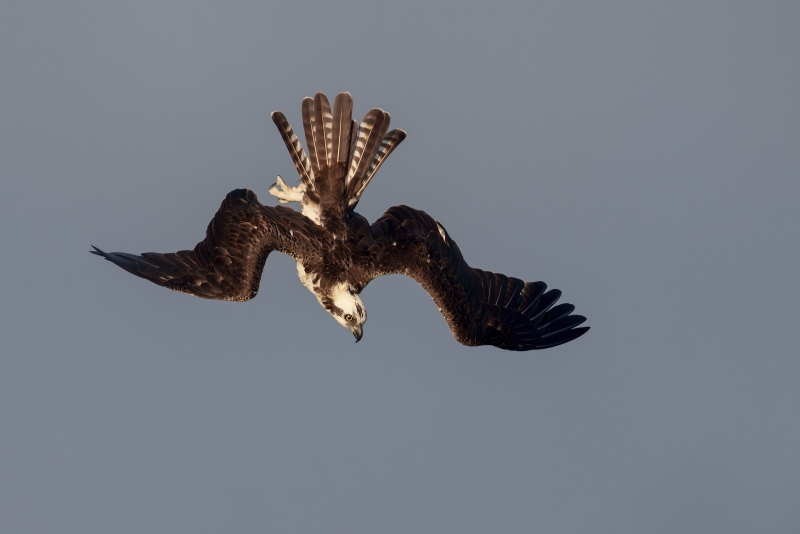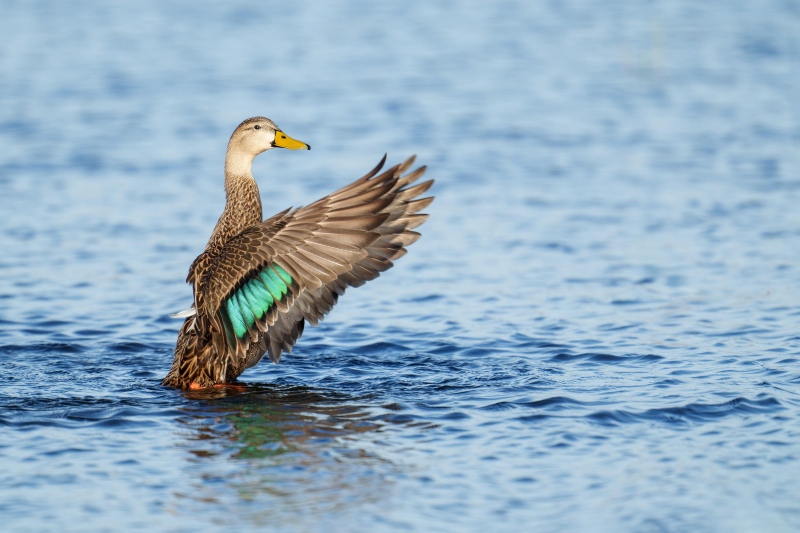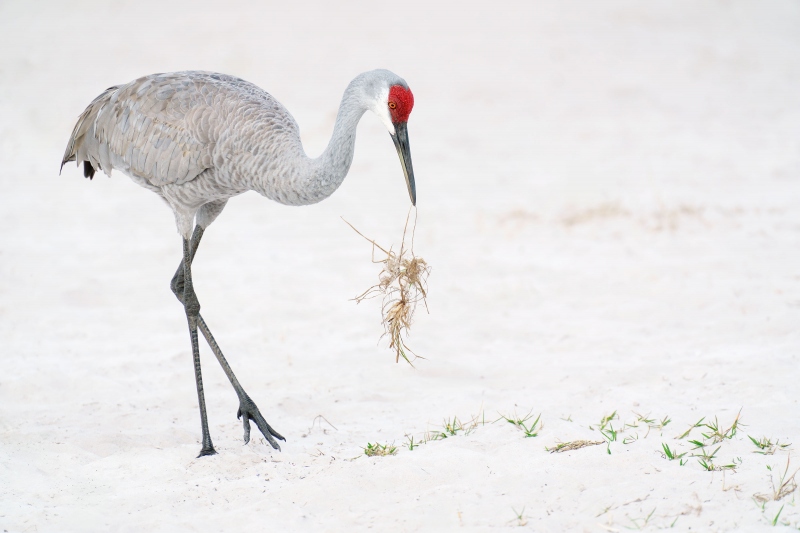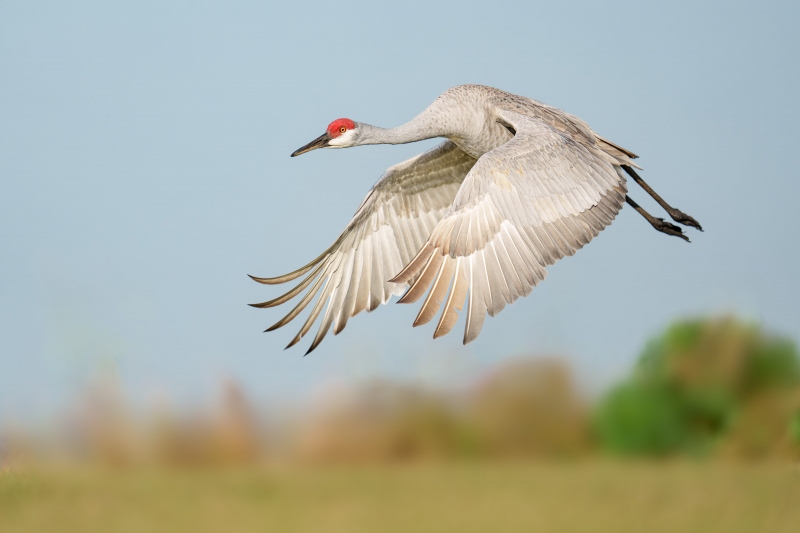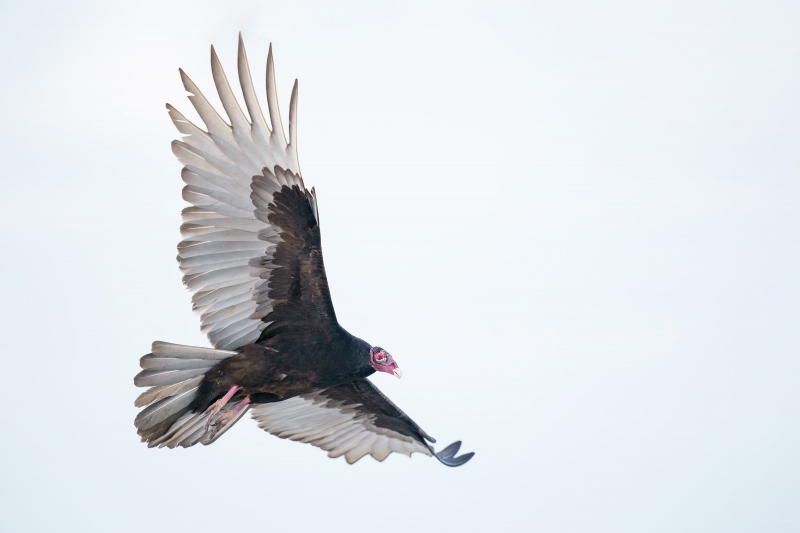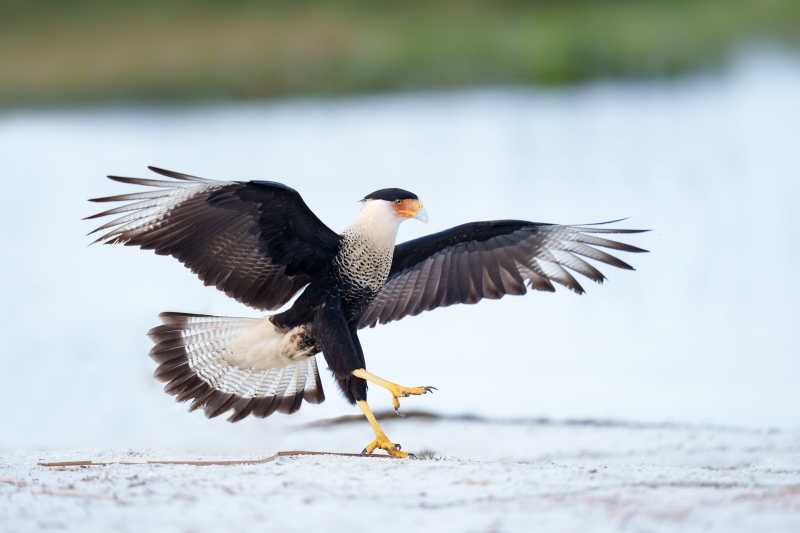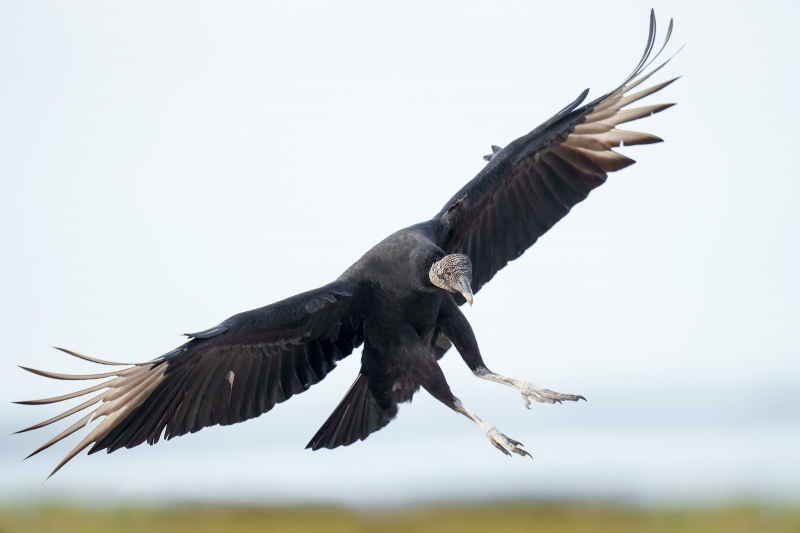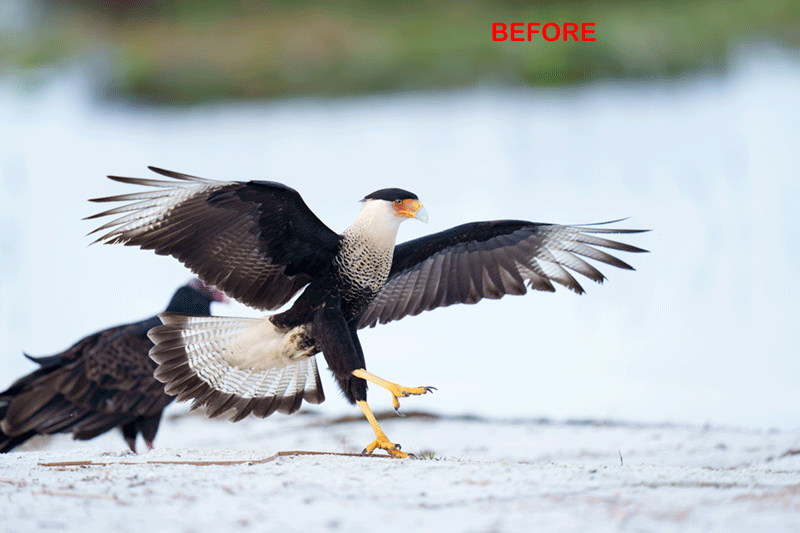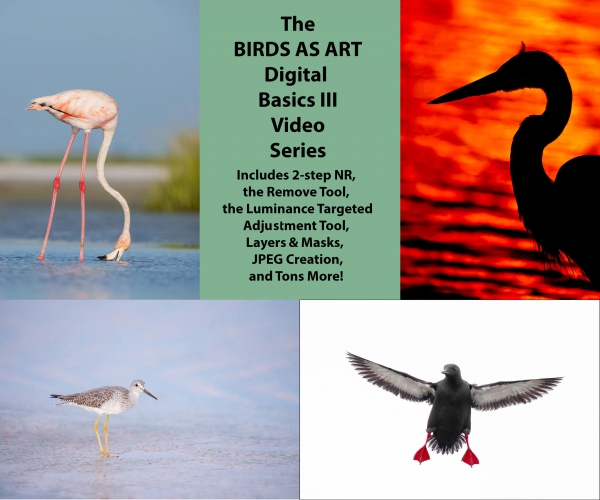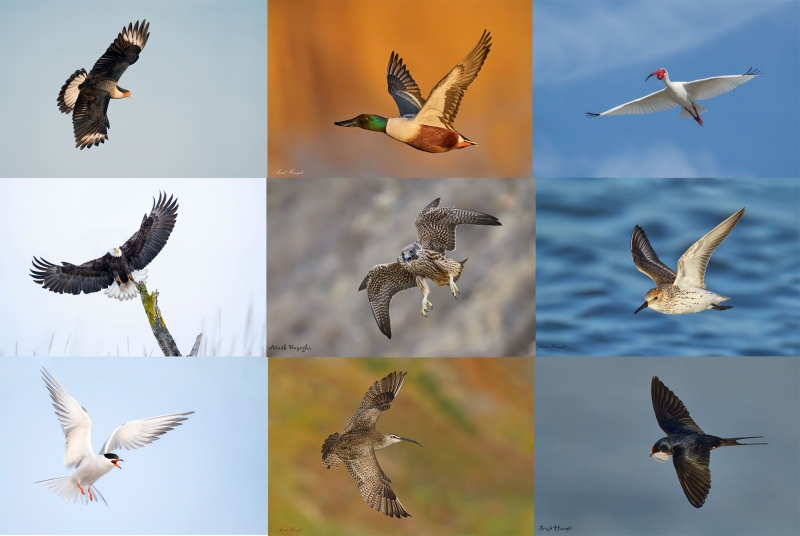|
This infrared image was created on a Palouse IPT with the hand held Canon EF 11-24mm f/4L USM lens and a Canon EOS 5D Mark II converted to infrared at 720nm. ISO 400. Evaluative metering +2/3 stop: 1/320 sec. at f/9. Custom White Balance off the green grass. The AF point to the left and below the center AF point/One Shot/Rear Focus AF as framed. Click here to see the latest version of the Rear Focus Tutorial. Click on the image to see a larger version. Old Grain Elevator |
|
This image was created many years ago on Thanksgiving Day at Bosque del Apache NWR with the handheld Canon EF 100-400mm f/4.5-5.6L IS II USM lens (at 278mm) and my Kolari Vision-converted EOS-5D Mark II. ISO 800. Evaluative metering +2 stops: 1/800 sec. at f/5.6. Custom WB. All 9 AF points/AI Servo/Shutter Button AF was active at the moment of exposure (as is always best when hand holding). Click on the image to see a larger version. Red-winged Blackbird flock in front of mountains/IR |
Canon EOS 5D Mark III/24-105 Infrared Rig with Many Extras!
Morro Bay IPT veteran Dane Johnson is offering a Canon EOS 5D Mark III (converted to infrared, as noted below) in near-mint conditions with the BG-E11 battery grip (in like-new condition) and a Canon EF 24-105mm f/4 L IS USM lens (also in near-mint condition) for a ridiculously low $999.00. The Super Color Infrared (590nm) conversion was performed by Life Pixel in November 2017 and included a custom lens focus calibration. The shutter count is approximately 12,330. The sale includes everything above, the front body cap, the front and rear lens caps, the EW-83H lens shade, all the items that came in the original boxes (camera strap, battery charger, cables, manuals, etc.), the original product boxes, a Canon RS-80N3 Remote Switch (cable release), two RRS L-plates (for the camera and for the battery grip), three extra LP-E6 batteries, four Delkin 32GB CF 700X UDMA 6 compact flash cards, a Hoodman loupe for checking focus in the rear panel in live-view mode, a Photoshop action for channel switching the color channels (loaded on the CF card in the camera), and insured ground shipping via major courier to lower-48 US addresses only.
Your item will not ship until your check clears unless other arrangements are made.
Please contact Dane via e-mail or by phone at 1-559-593-0989 (Pacific time zone).
As you can see above, I dabbled in IR for a while. I had some good results from Bosque and the Palouse. Dane’s offer above has so many extras that you could toss the camera and still come out ahead! artie
What’s Up?
There is an only one spot left on the first Homer IPT. Please e-mail for late-registration discount e-mail. I am willing to practically give the spot away for free to fill the boat. Homer #2 is sold out.
Thanks to the many who commented on my twenty-four favorite 2023 images in the previous blog post. It’s not too late to chime in if you missed doing so. I will share my top three with you here in the next post.
Sun with a NW wind on Tuesday morning went as expected — not too good. I did spend some time photographing a young Red-shouldered Hawk that sat on The Perch for two consecutive mornings. And there were a zillion Cattle Egrets feeding on the South Peninsula — actually about 200. The Forster’s Tern flock was up to 45 birds. And on my way yesterday afternoon, there were two Bonaparte’s Gulls swimming alongside the pier.
Today is Wednesday 3 January. As the forecast is calling for mostly cloudy skies with a NE breeze. — pretty good, I will head down to the lake with some rotten, smelly fish carcasses and heads when this offering is posted. Wherever you are and whatever you choose to do, I hope that you too have a great day.
Please remember to use the B&H and Amazon links that are found on most blog pages and to use the BIRDSASART discount code at checkout when purchasing your new gear from Bedfords to get 3% back on your credit card and enjoy free second-day air FedEx. Please, also, consider joining a BAA IPT. You will be amazed at how much you will learn!
You can find some great photo accessories (and necessities, like surf booties!) on Amazon by clicking on the Stuff tab on the orange/yellow menu bar above. On a related note, it would be extremely helpful if blog-folks who, like me, spend too much money on Amazon, would get in the habit of clicking on the Amazon logo link on the right side of each blog post when they shop online. As you might expect, doing so will not cost you a single penny, but would be appreciated tremendously by yours truly. And doing so works seamlessly with your Amazon Prime account.
If an item — a Delkin flash card, or a tripod head — for example, that is available from B&H and/or Bedfords, is also available in the BAA Online Store, it would be great, and greatly appreciated, if you would opt to purchase from us. We will match any price. Please remember also to use my B&H affiliate links or to earn 3% cash back at Bedfords by using the BIRDSASART discount code at checkout for your major gear purchases. Doing either often earns you free guides and/or discounts. And always earns my great appreciation.
Save 15%!
If you’d like to try out a new lens, or if you need a lens for a specific trip or project (or for an IPT), LensRentals.com is the only way to go. To save 15%, simply click on the logo link above, arrange for your rental, and type in BIRDSASART15. If you type the gear you are looking for in the search box, it will pop right up. LensRentals.com offers affordable insurance. You can decline it, opt for LensCap: Damage Only, or select LensCap: Damage & Theft. Then hit PROCEED TO CHECKOUT. After you enter all of your info but before completing your order, be sure to scroll down to Promo Code box and enter the BIRDSASART15 code to save 15%.
I checked on renting a Sony FE 70-200mm f/2.8 GM OSS II lens for a week. The cost is only $122.00. LensCap: Damage Only coverage can be added for a very low $18.00. Going with LensCap: Damage & Theft would be $27.00. The shipping charge varies. They offer an interesting program called Lensrentals HD. By signing up for this shipping discount program ($99.00/year), you’ll get free Standard Shipping on all the orders you place.
Renting a Sony 600mm f/4 GM OSS lens for a week will cost you $536.00. The two coverage options come in at $76.00 or $114.00. Less your 15% discount when you enter the BIRDSASART15 code into the Promo Code box at checkout and enter the BIRDSASART15 codeine the Promo Code box at checkout to save 15%. .
Remember, to save the 15% on your rental you must start your search by clicking on the logo above, or on this link: LensRentals.com
B&H Simplified
To ensure that I get credit for your B&H purchases, you can always click here. The tracking is invisible but greatly appreciated. And, you can use your PayBoo card. You must use the website to order. B&H will reopen on Fri April 14. Thanking me for the past 4000 educational blog posts could not be any easier and will not cost you one penny. Please shoot me your B&H receipt for major purchases.
Bedfords Simplified
Click here to start your search. Choose standard shipping, and when you get to the payment page, enter BIRDSASART in the discount code box and hit apply. You will be upgraded to free second day air Fed-Ex and receive 3% cash back on your credit card once your stuff ships. Either is greatly appreciated by yours truly.
B&H
Many folks have written recently stating that they purchased a Sony a1 from B&H and would like their free membership in the Sony 1 Info and Updates Group, a $150.00 value. When I check my affiliate account, their orders have not been there. When I let them know that they get credit for B&H purchases only if they use one of the many B&H affiliate links on the blog or begin their searches with this link, they are always disappointed. If in doubt, please contact me via e-mail and request a BH link. I am always glad to help and to guide you to the right gear.
Bedfords Amazing BAA Discount Policy
Folks who have fallen in love with Bedfords can now use the BIRDSASART coupon code at checkout to enjoy a post-purchase, 3% off-statement credit (excluding taxes and shipping charges) on orders paid with a credit card. The 3% credit will be refunded to the card you used for your purchase. Be sure, also, to check the box for free shipping to enjoy free Second Day Air Fed-Ex. This offer does not apply to purchases of Classes, Gift Cards, prior purchases.
Visit the Bedfords website here, shoot Steve Elkins an e-mail, or text him on his cell phone at (479) 381-2592.
Important Note
As an Amazon Associate, I earn a small percentage when you purchase from Amazon after using any of the Amazon links on the blog (including the logo-link on the right side of each blog post page). My affiliate link works fine with Amazon Prime and using it will not cost you a single cent. Huge thanks, BTW 🙂


Gear Questions and Advice
Too many folks attending BAA IPTs and dozens of photographers whom I see in the field and on BPN, are — out of ignorance — using the wrong gear, especially when it comes to tripods and more especially, tripod heads. And the same is true in spades when ordering new camera bodies or lenses. My advice will often save you some serious money and may help you avoid making a seriously bad choice. Please know that I am always glad to answer your gear questions via e-mail. If you are desperate, you can try me on my cell at 863-221-2372. Please leave a message and shoot me a text if I do not pick up.
|
|
|
This image was created on 1 January 2024 down by the lake at ILE. I used the handheld Sony FE 200-600mm f/5.6-6.3 G OSS lens (at 448mm) and The One, the Sony Alpha 1 Mirrorless digital camera. ) The exposure was determined using Zebra technology with ISO on the Thumb Dial. ISO 1250: 1/3200 second at f/6.3 (wide-open) in Manual Mode. AWB at 8:32:14am on a sunny morning. RawDigger showed the exposure to be dead-solid perfect (ho hum for Sony). Tracking: Zone AF-C with Bird Face/Eye Detection performed perfectly. Be sure to click on the image to enjoy a high-res version. Image #1: Bald Eagle 4-year old in flight
|
The Situation
On the morning of the first day of the year, it was mostly sunny with a breeze that was switching from the northeast to the southeast. Driving around, I spotted the 4-year old Bald Eagle sitting on the grass on the North Field. Set up at 1200mm on the BLUBB, my heart rate increased as I drove slowly into position. In the early sunlight, the bird looked huge and regal. Then it flew off, harassed by the caracaras.
I put out some fish scraps and as I made my way back to the car, the sub-adult eagle swooped in followed quickly by the caracaras. I came up empty, sat on a pillow on the grass right by the car, and had a few good chances. The eagle flew by several times; today’s two feature images were made in the same second on the bird’s best approach. Though it never came down to the yummy salmon head, I was glad to create a few decent flight shots.
I did not stay long once the Black Vultures took over. I went back to patrolling in my SUV and again spotted the 4-year eagle on the grass near the caracara nest tree. This time I stayed farther back. As I got on sun angle, both caracaras dived on the eagle and drove it away. I’ve been trying for chase flight shots but so far have come up empty.
|
|
|
This image was created on 1 January 2024 down by the lake at ILE. I used the handheld Sony FE 200-600mm f/5.6-6.3 G OSS lens (at 448mm) and The One, the Sony Alpha 1 Mirrorless digital camera. ) The exposure was determined using Zebra technology with ISO on the Thumb Dial. ISO 1250: 1/3200 second at f/6.3 (wide-open) in Manual Mode. AWB at 8:32:14am on a sunny morning. RawDigger showed the exposure to be dead-solid perfect (ho hum for Sony). Tracking: Zone AF-C with Bird Face/Eye Detection performed perfectly. Be sure to click on the image to enjoy a high-res version. Image #2: Bald Eagle 4-year old in flight
|
Consecutive Frames
As the 4-year eagle flew by, I got on it as quickly as possible. The first two frames, _A1G0822 & _A1G0823, were clearly the best as they were the only ones made before the bird turned away to the west. As expected with a 30 fps body, the two images were created in the same second. Both are excellent
Your Call?
Though obviously very similar, I believe that one of the two images has a more dynamic flight pose, and that the other one has slightly better sky color.
Which is the more dynamic flight pose?
Which image has the best blue sky?
I will share my thoughts with you here soon.

